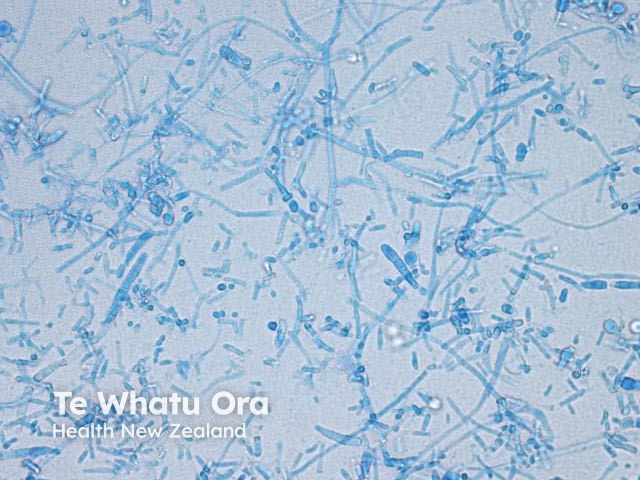Main menu
Common skin conditions

NEWS
Join DermNet PRO
Read more
Quick links
Infections Diagnosis and testing
Author: Hon A/Prof Amanda Oakley, Dermatologist, Hamilton, New Zealand, 2003.
Reviewing dermatologist: Dr Ian Coulson
Introduction - mycology
Introduction - dermatophyte fungi
Diagnosis
Mycology is the study of fungi.
Dermatophyte fungi are the ringworm fungi (tinea). They depend on their host, which may be an animal ("zoophilic") or a human ("anthropophilic") and need to spread from one host to another to survive. Dermatophytes may also prefer to live in the soil ("geophilic").
Anthropophilic dermatophytes are so well adapted to living on human skin that they provoke a minimal inflammatory reaction. Zoophilic or geophilic dermatophytes will often provoke a more vigorous inflammatory reaction when they attempt to invade human skin.
There are nine genera of dermatophytes, recognised by the nature of their macroconidae (asexual spores). The common dermatophytes infecting humans are:
Other genera are Arthroderma, Ctenomyces, Lophophyton, Nannizzia, Guarromyces and Paraphyton.
There are about 50 species. Their spores can live for more than a year in human skin scales in the environment.
Anthropophilic organisms include:
Zoophilic organisms include:
Geophilic organisms include:
Fungal infection may be suspected clinically or with the help of dermatoscopy. The presence of a dermatophyte infection is confirmed by:


Trichophyton rubrum culture on agar slope